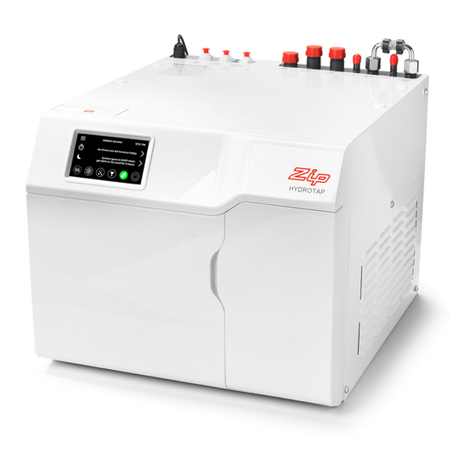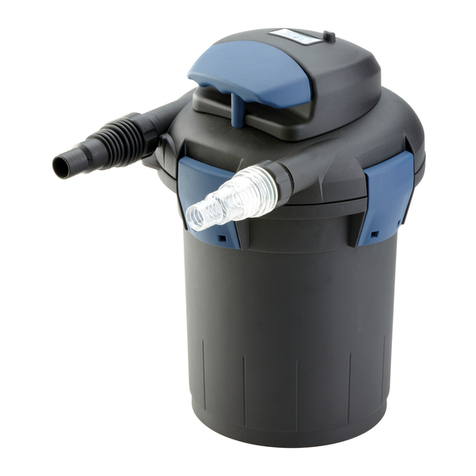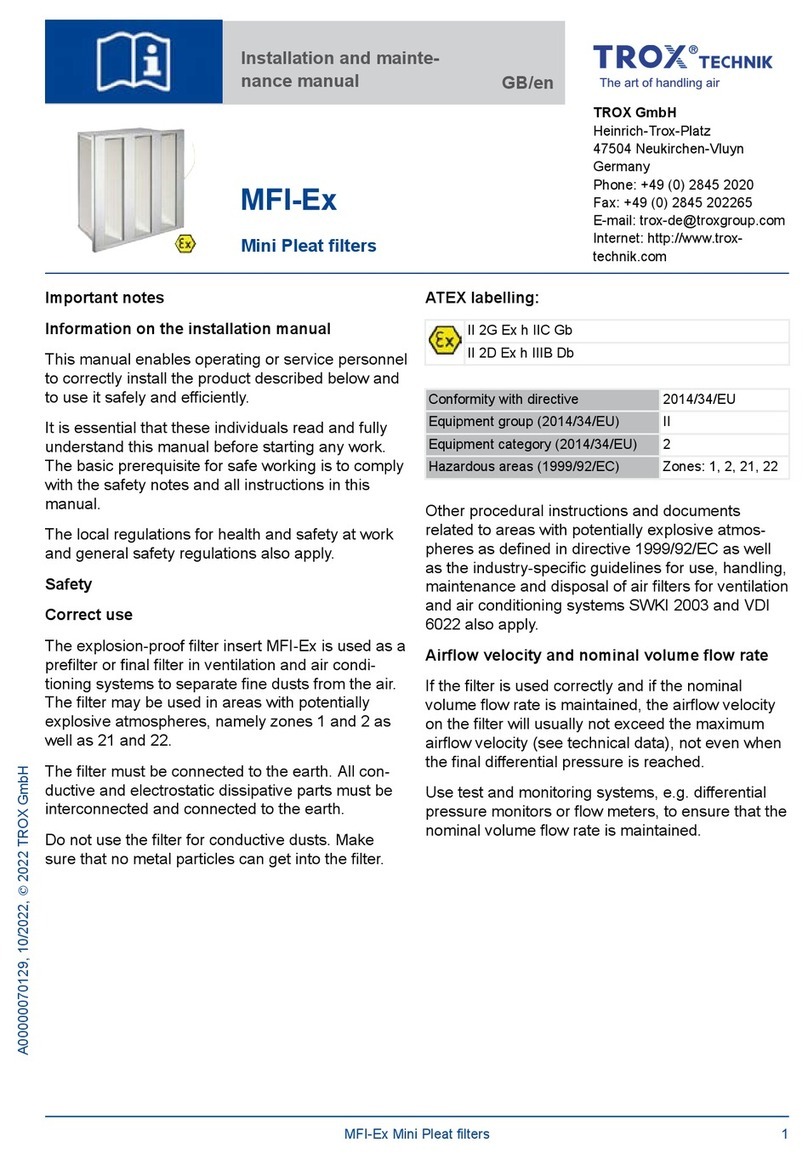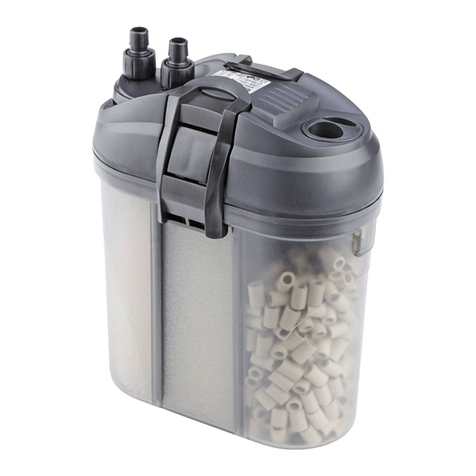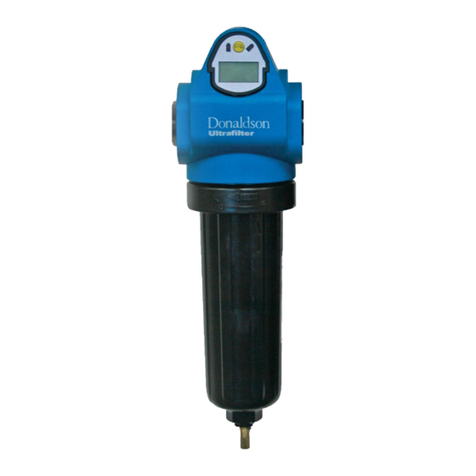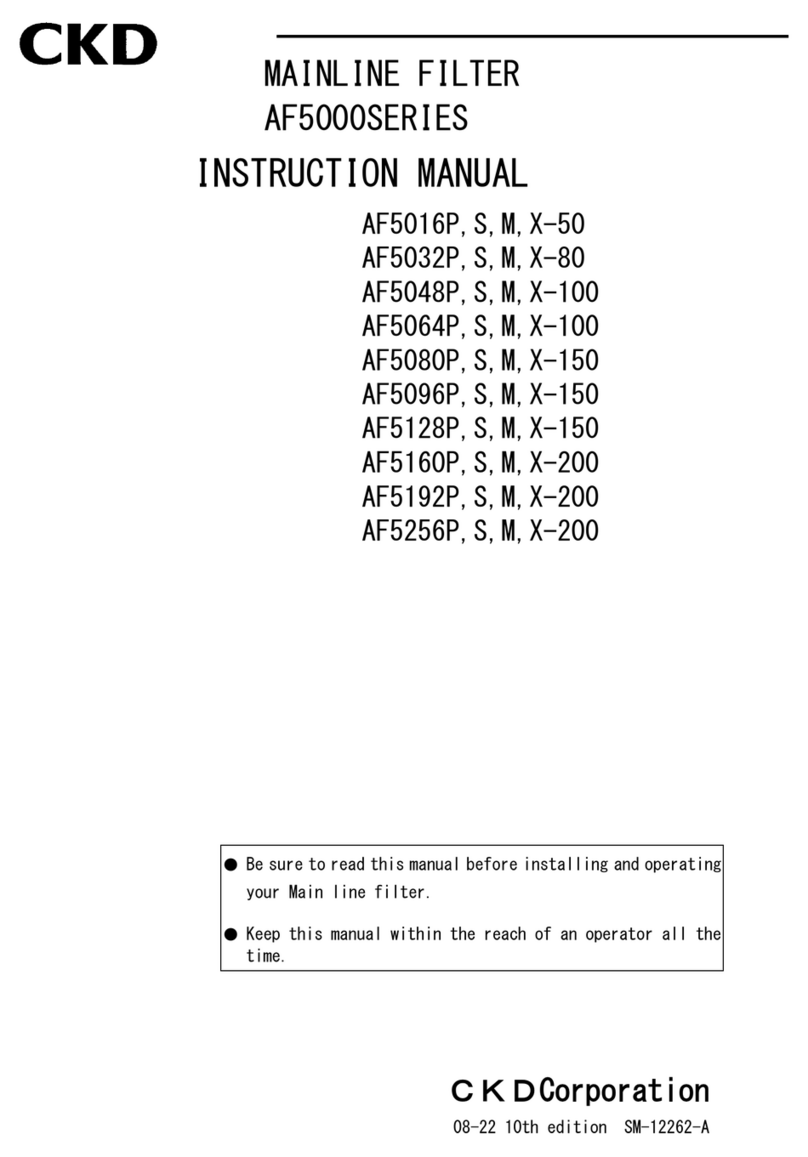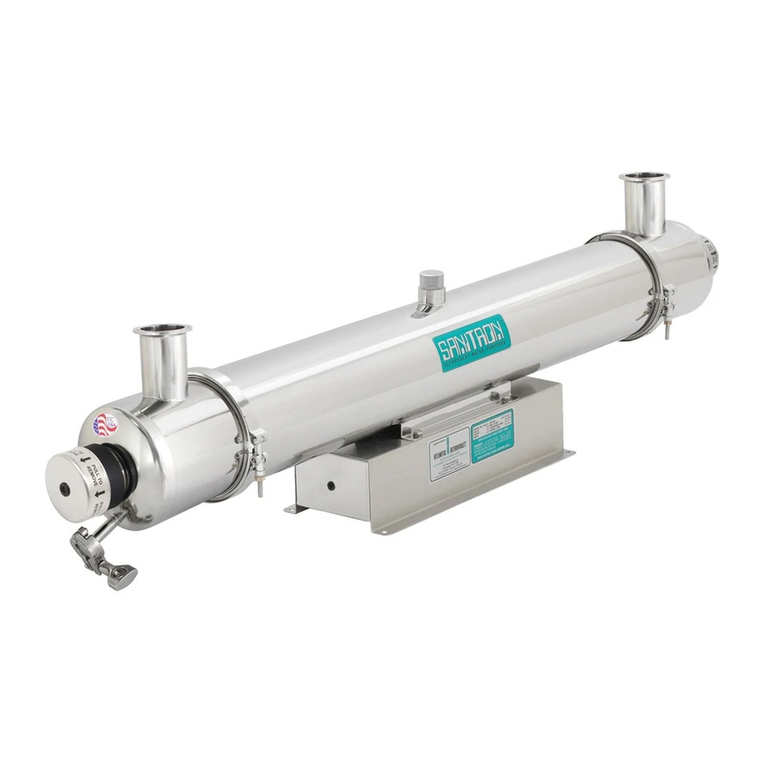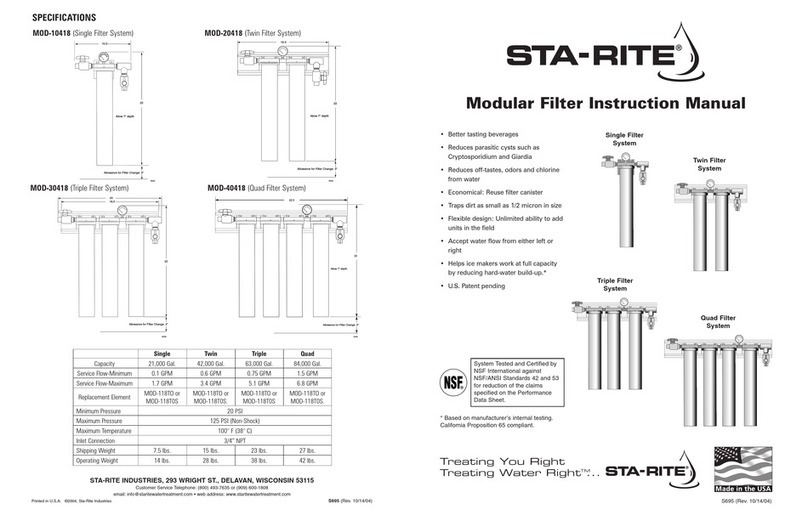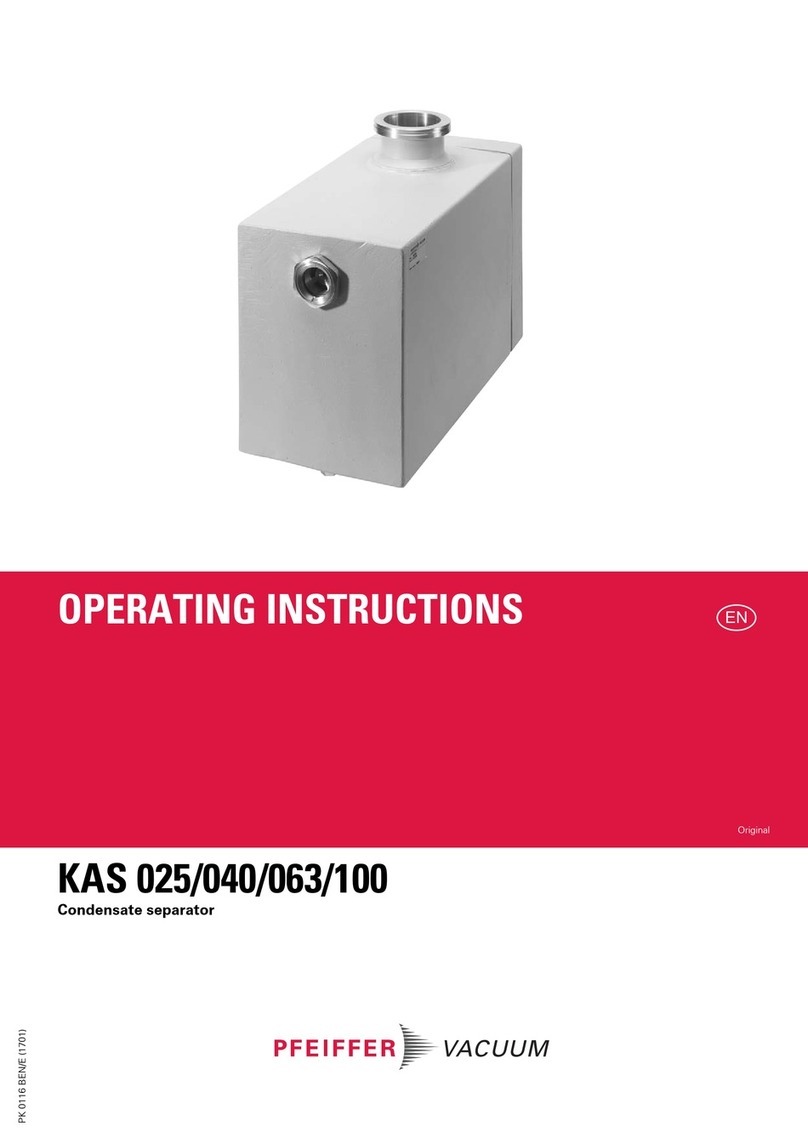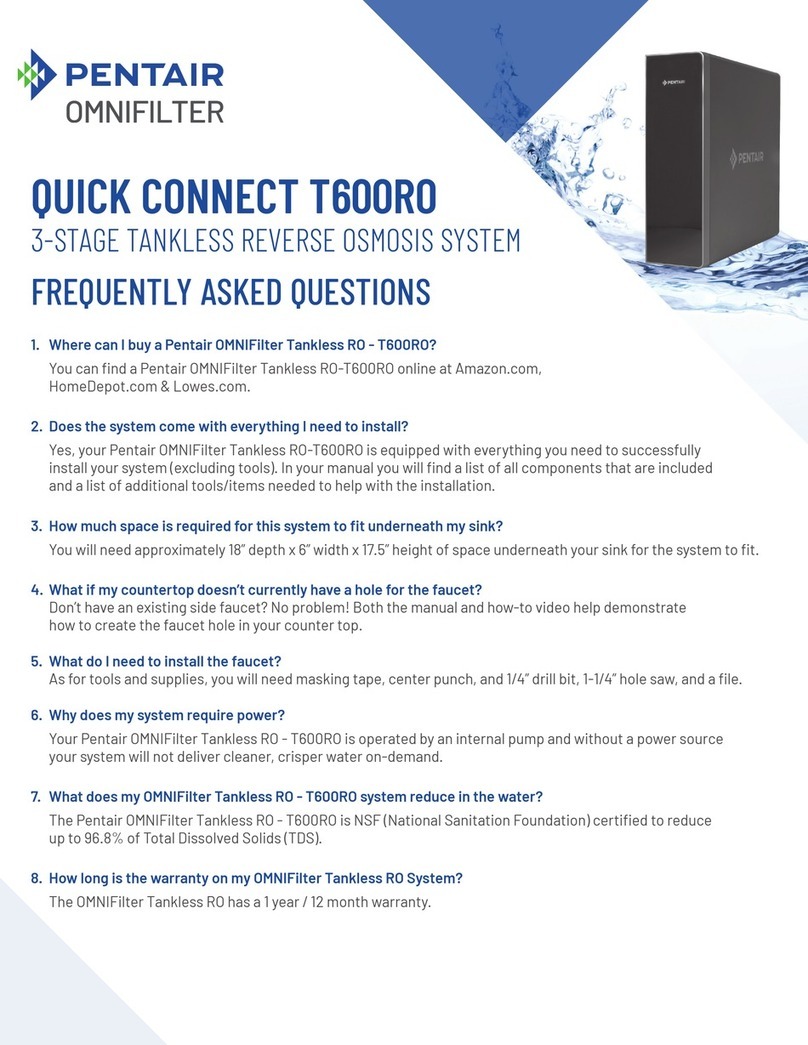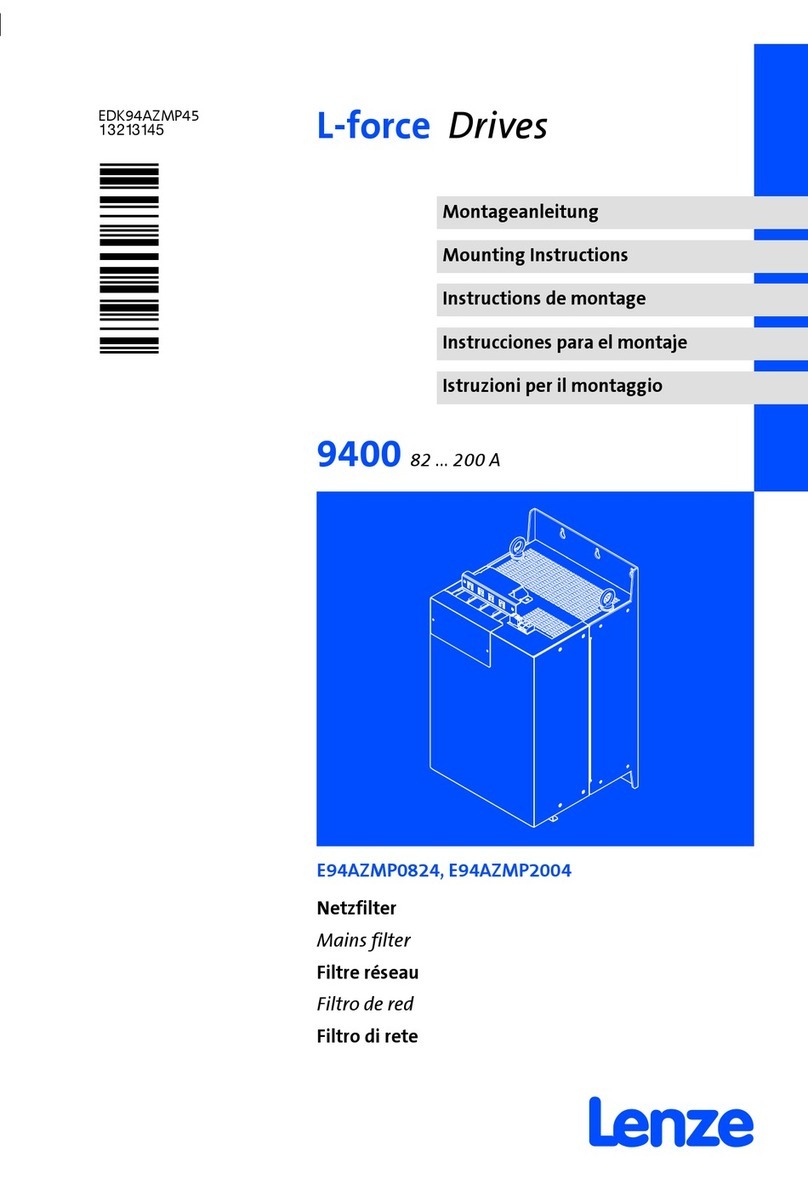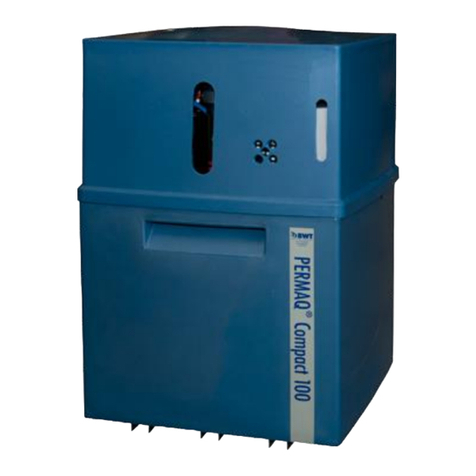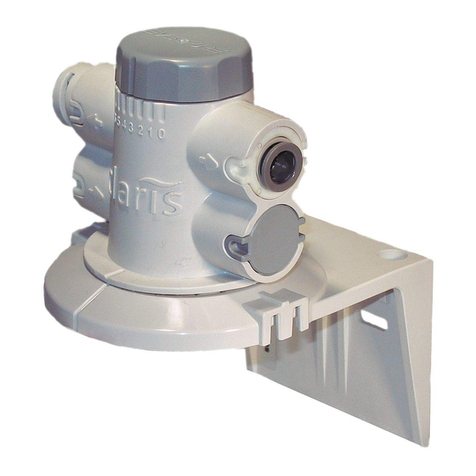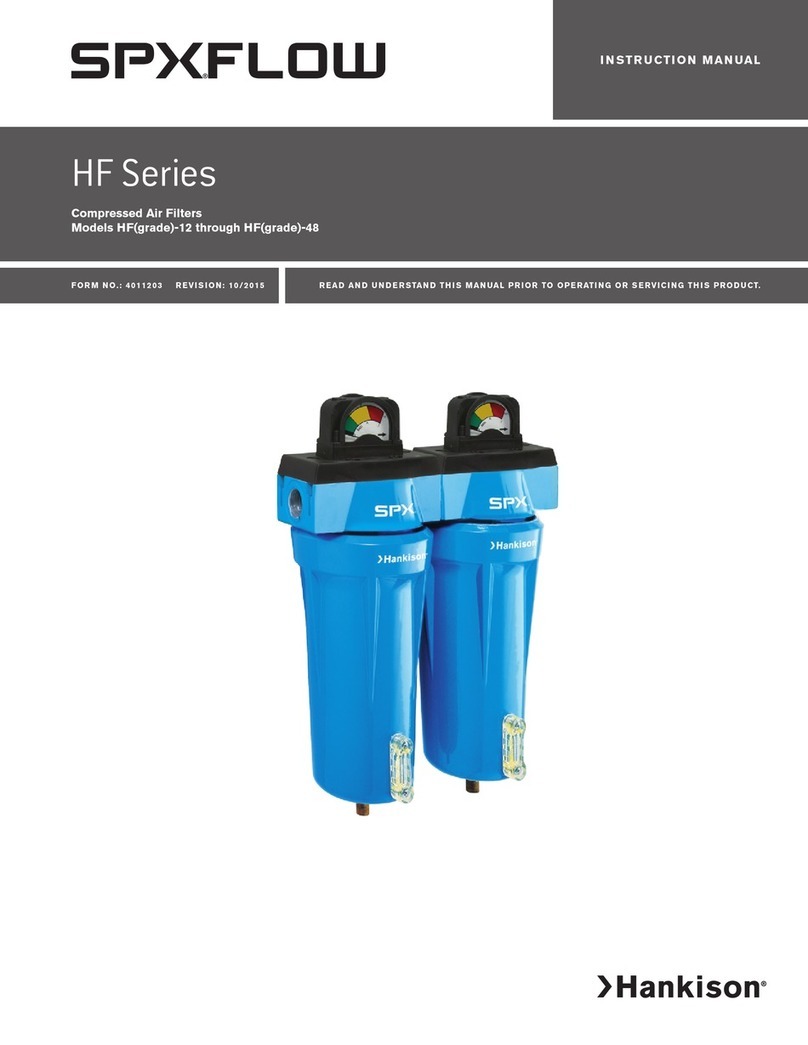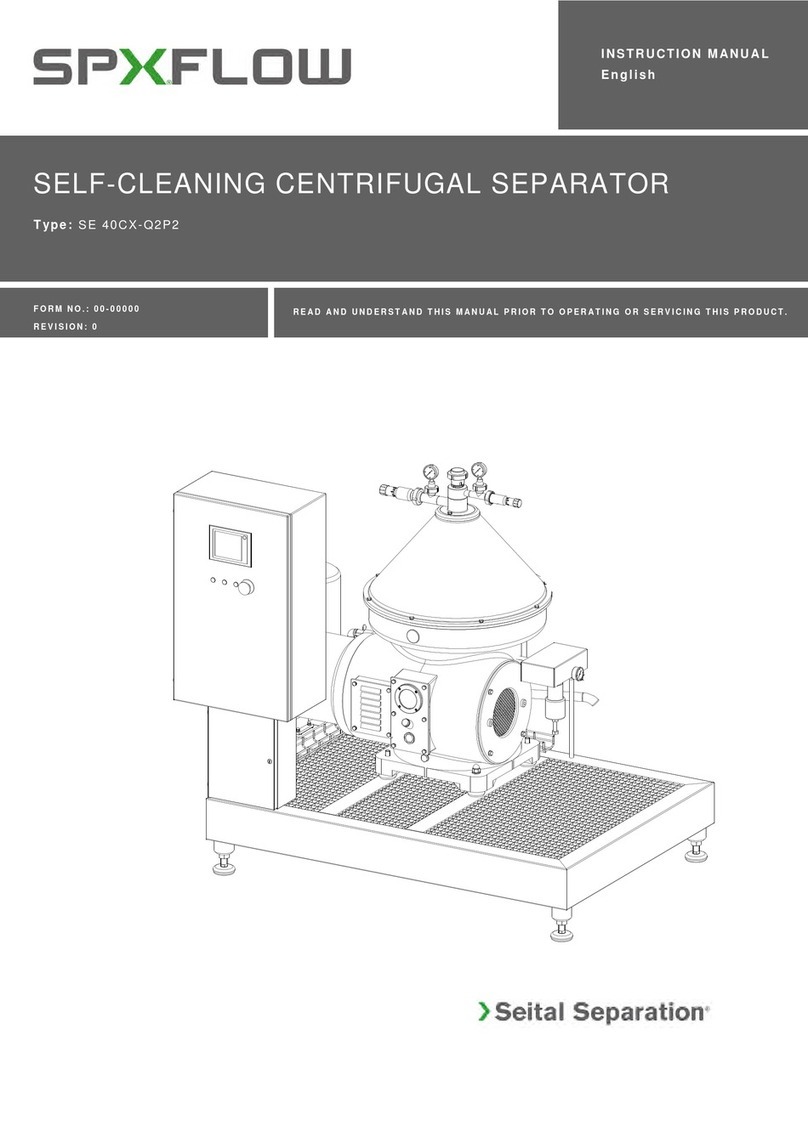
5
2.0 OPERATION
2.1 After installation slowly pressurize Mist Eliminator and inspect for
leaks. Operation is continuous and automatic.
2.2 Periodic checks are recommended to insure continuous separation
and ltration eciency.
A.. Check pressure drop
1. Check for excessive pressure drop. Pressure drop in excess
of 3 psi (0.2 bar) indicates that the cartridge should be re-
placed.
IMPORTANT: Pressure drop should never exceed 30 psi
(2.1 bar).
2. Check for sudden reduction in pressure drop. This might
indicate a leak through the lter cartridge due to damage
from chemical attack or excessive pressure drop.
B. Check the ow, pressure, and temperature to make sure that the
lter is not being operated beyond its rated capacity. See Sec-
tion 1.8 for operating Limitations and Section 2.3 to determine
maximum ow capacity.
C. Check for proper drainage. See that manual drains are drained
periodically and that automatic drains are functioning.
2.3 Determining maximum ow capacity
Maximum air ow for the various lters at 100 psig (7 bar) is indicated
in Table 1. To determine maximum air ows at inlet pressures other
than 100 psig (7 bar), multiply ow from Table 1 by multiplier from
Table 2 that corresponds to the minimum operating pressure at the
inlet of the lter.
2.4 Maximum Operating Conditions
Maximum Working Pressure: 150 psig (10.3 bar)
ASME coded pressure vessels
Maximum Operating Temperature: 150°F (65°C)
TABLE 1
Model
Number
Flow scfm @
100 psig, 7 bar
MM1
MM2
MM3
MM4
MM5
MM6
MM7
MM8
125
250
500
1100
1500
2100
2400
3000
TABLE 2
Minimum
Inlet Pressure
psig / bar
Multiplier
20 / 1.4
30 / 2.1
40 / 2.8
60 / 4.1
80 / 5.5
100 / 7.0
120 / 8.3
150 / 10.3
0.30
0.39
0.48
0.65
0.82
1.00
1.17
1.43
3.0 MAINTENANCE
3.1 When to replace lter cartridge
A. Initial (dry) pressure drop: 1 psi (0.07 bar) nominal.
B. Operating pressure drop: During operation the lter cartridge be-
comes liquid loaded (wetted). At rated ow conditions, operating
pressure drop will normally be: 0.5 to 1 psi (0.035 to 0.07 bar).
Further pressure drop will occur only as the cartridge becomes
loaded with solid particles.
C. Change out pressure drop: IT IS RECOMMENDED THAT THE
CARTRIDGE BE REPLACED FOR MAXIMUM FILTRATION
EFFICIENCY WHEN PRESSURE DROP REACHES 3 PSI
(0.2 BAR).
NOTE: Pressure drop after ow interruption.
When ow is interrupted for several hours, the pressure drop may tempo-
rarily increase upon the resumption of ow. Normally, within one hour, the
pressure drop should return to where it was prior to stopping the ow. This
phenomenon is not cause for lter cartridge replacement. It is due both
to residual liquids contained within the cartridge “pooling” and a change
in the viscosity of these liquids due to a temporary temperature change.
3.2. Procedure for lter cartridge replacement
THIS FILTER IS A PRESSURE CONTAINING DEVICE. DEPRESSURIZE
BEFORE SERVICING.
A. By-pass the lter assembly to permit servicing.
B. Depressurize the lter assembly slowly by opening blow down
valve.
C. Remove bolts securing the lter top to the vessel.
D. Remove the top ange of the lter complete with lter element.
E. Clean the inside of the vessel and inspect for any signs of cor-
rosion.
F. Unscrew the lter element from the top ange. Discard the ele-
ment in accordance with applicable regulations.
Used elements typically hold contaminants, such as compressor
lubricants and particulate matter.
G. Thread new element into top ange.
H. Replace top ange (complete with new lter element).
I. Reinstall bolts to secure lter top.
J. Slowly repressurize lter housing and check for any leaks.








